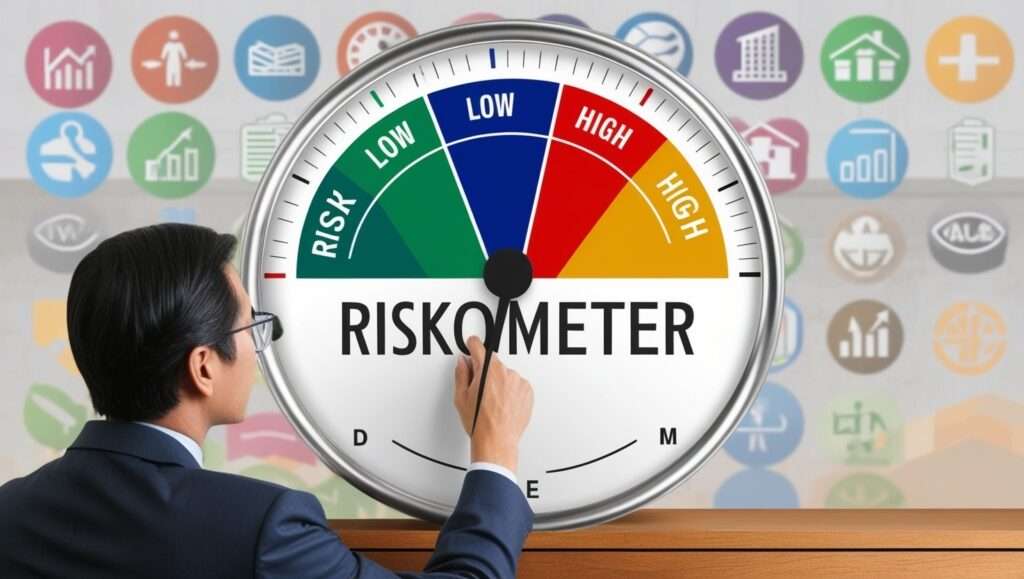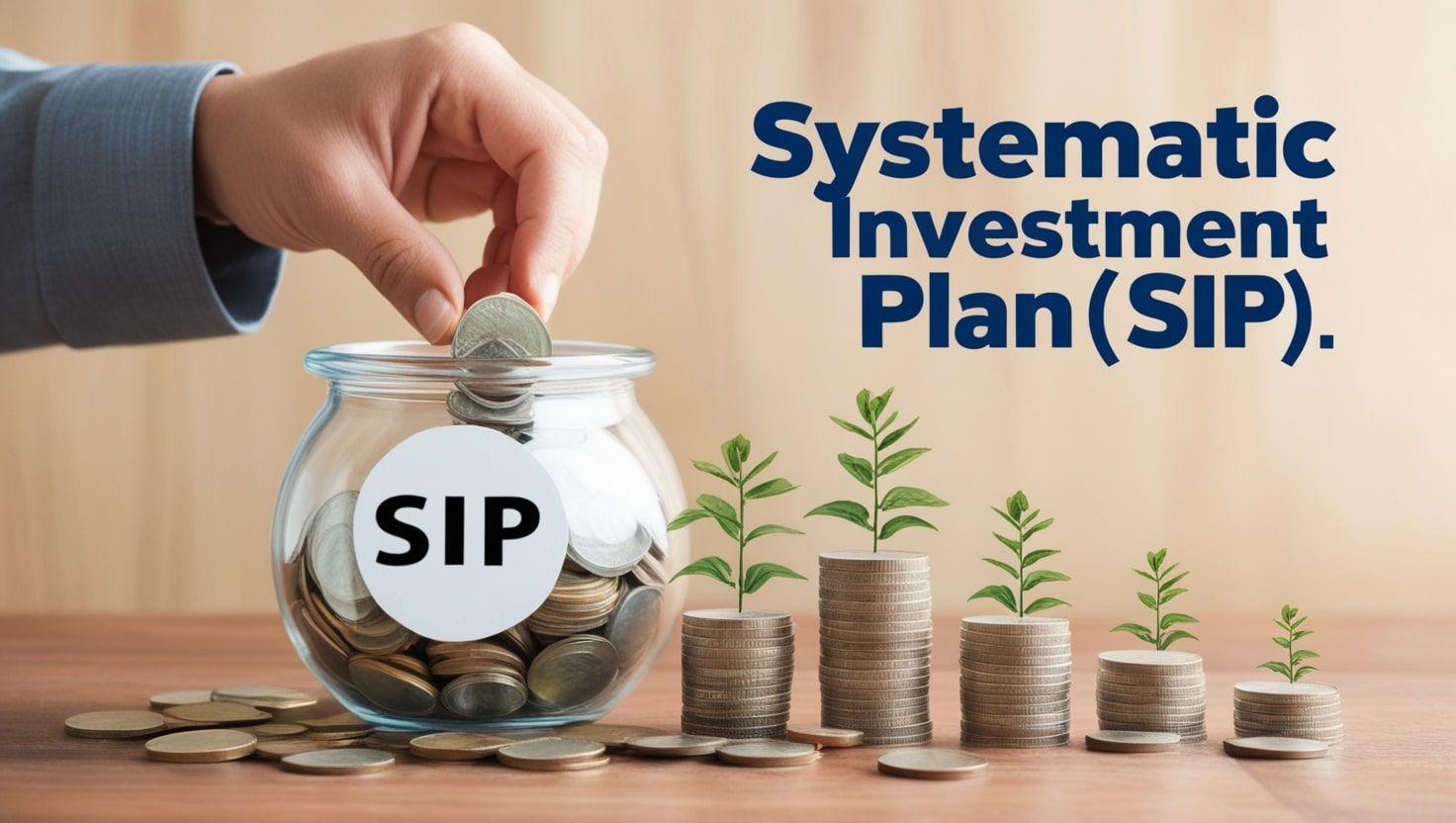
Introduction
In this article, I will explain what is a Riskometer and how it plays a crucial role in helping investors understand the level of risk associated with various mutual fund investments. A Riskometer is a tool introduced by SEBI (Securities and Exchange Board of India) that visually represents the risk level of a mutual fund scheme. Whether you are a seasoned investor or new to the market, understanding the Riskometer can help you make informed decisions based on your risk tolerance. Let’s dive into the details of the Riskometer and explore the different levels it encompasses.
Understanding the Riskometer
The Riskometer is a simple yet effective tool that visually communicates the risk associated with a mutual fund. It ranges from low to high, giving investors a clear picture of what they can expect in terms of risk and returns. Introduced by SEBI, this tool is mandatory for all mutual fund schemes in India. The Riskometer allows investors to align their investment choices with their risk appetite, ensuring that they are not caught off guard by the volatility of the market.
Importance of the Riskometer
Before diving into the different levels, it is essential to understand why the Riskometer is so important. Investing in mutual funds is inherently risky, but not all schemes carry the same level of risk. The Riskometer helps investors gauge this risk in a standardized manner, enabling them to make informed decisions. By understanding the Riskometer, investors can better match their investment choices with their financial goals and risk tolerance.
The Different Levels of the Riskometer
The Riskometer is divided into five levels, each indicating a different degree of risk. These levels are as follows:
- Low Risk: This level indicates that the mutual fund scheme is suitable for conservative investors who prioritize capital preservation over high returns. The chances of losing the invested capital are minimal, but so are the potential returns. This level is generally associated with debt funds.
- Low to Moderate Risk: This level is for investors who are slightly more open to taking risks but still prefer a cautious approach. The returns are slightly higher than low-risk schemes, but the risk is still on the lower side.
- Moderate Risk: At this level, the risk and returns are balanced. Investors with a moderate risk appetite, who are looking for a mix of stability and growth, may find this level suitable. It is often associated with balanced or hybrid funds.
- Moderately High Risk: Investors who are willing to take on more risk for the potential of higher returns fall into this category. While the potential for growth is significant, there is also a higher chance of volatility and capital loss.
- High Risk: This is the highest level on the Riskometer, indicating that the mutual fund scheme is suitable for aggressive investors. These funds offer the potential for high returns, but they also come with a high degree of risk. Equity funds and sector-specific funds often fall into this category.
How to Use the Riskometer in Your Investment Strategy
When selecting a mutual fund scheme, it’s crucial to consider your risk tolerance. The Riskometer serves as a guide to help you choose a scheme that aligns with your financial goals and risk appetite. For example, if you are nearing retirement and prefer stability over high returns, you may want to opt for a scheme with a “Low Risk” or “Low to Moderate Risk” rating. On the other hand, if you are young and have a higher tolerance for risk, a “Moderately High Risk” or “High Risk” scheme might be more suitable.
Case Study: How Mr. Sharma Used the Riskometer to Achieve His Financial Goals
Mr. Sharma, a 45-year-old professional, wanted to invest in mutual funds to build a retirement corpus. However, he was unsure about how much risk he should take. After consulting with his financial advisor and understanding the Riskometer, he decided to invest in a balanced fund with a “Moderate Risk” rating. This choice allowed him to achieve steady growth while minimizing risk, ultimately helping him reach his retirement goals.
The Future of the Riskometer
As the mutual fund industry evolves, the Riskometer is expected to become even more refined, offering investors clearer insights into the risk associated with various schemes. SEBI continues to monitor and update the guidelines for the Riskometer, ensuring that it remains a reliable tool for investors.
Conclusion
In conclusion, understanding the Riskometer and its different levels is essential for making informed investment decisions in mutual funds. Whether you are a conservative investor or willing to take on higher risks, the Riskometer provides a clear indication of what to expect in terms of risk and returns. By aligning your investment choices with your risk tolerance, you can achieve your financial goals more effectively.
FAQs
- What is a Riskometer? A Riskometer is a tool that visually represents the risk level of a mutual fund scheme, helping investors understand the potential risk and returns.
- Who introduced the Riskometer? The Riskometer was introduced by SEBI (Securities and Exchange Board of India) as a mandatory tool for all mutual fund schemes in India.
- What are the different levels of the Riskometer? The Riskometer has five levels: Low Risk, Low to Moderate Risk, Moderate Risk, Moderately High Risk, and High Risk.
- How does the Riskometer help investors? The Riskometer helps investors align their investment choices with their risk tolerance, ensuring they make informed decisions.
- Is the Riskometer applicable to all mutual fund schemes? Yes, the Riskometer is mandatory for all mutual fund schemes in India.
- Can the Riskometer level of a fund change over time? Yes, the Riskometer level of a fund can change based on its performance and market conditions.
- How should I use the Riskometer in my investment strategy? Use the Riskometer to choose mutual fund schemes that match your financial goals and risk tolerance.
- What does a High Risk level indicate? A High Risk level indicates that the mutual fund scheme is suitable for aggressive investors who are willing to take on higher risks for potentially higher returns.
- What type of funds are usually labeled as Low Risk? Debt funds and other conservative investment options are usually labeled as Low Risk.
- How often is the Riskometer updated? The Riskometer is updated regularly to reflect the current risk level of the mutual fund schemes.


